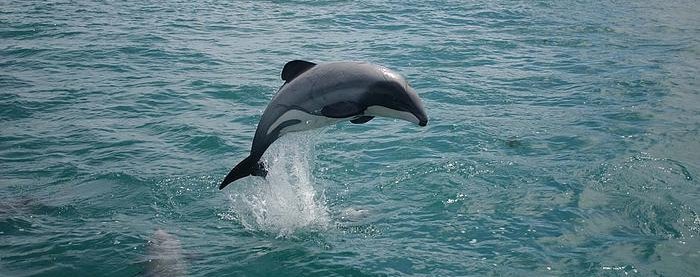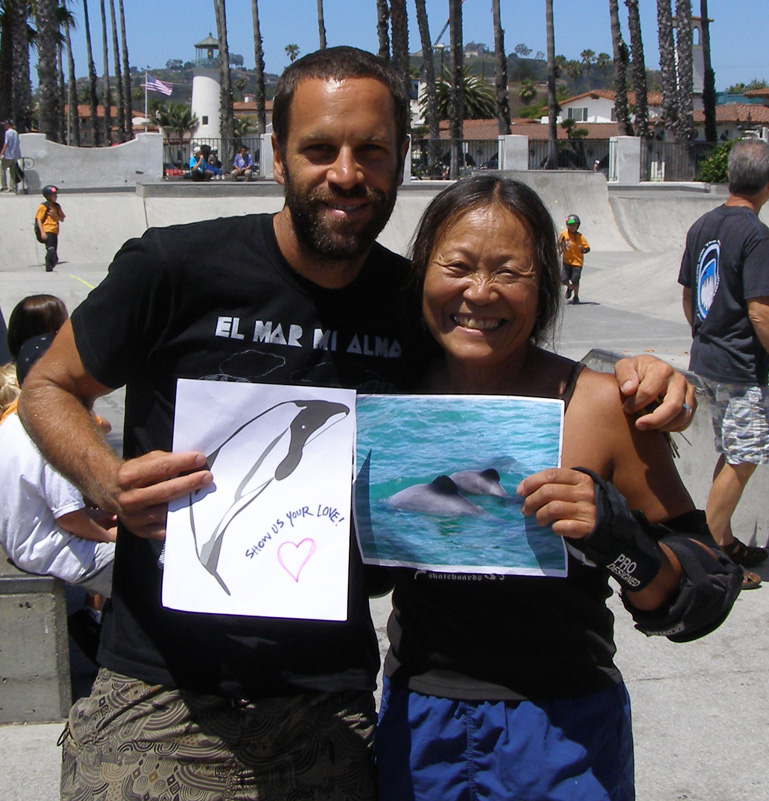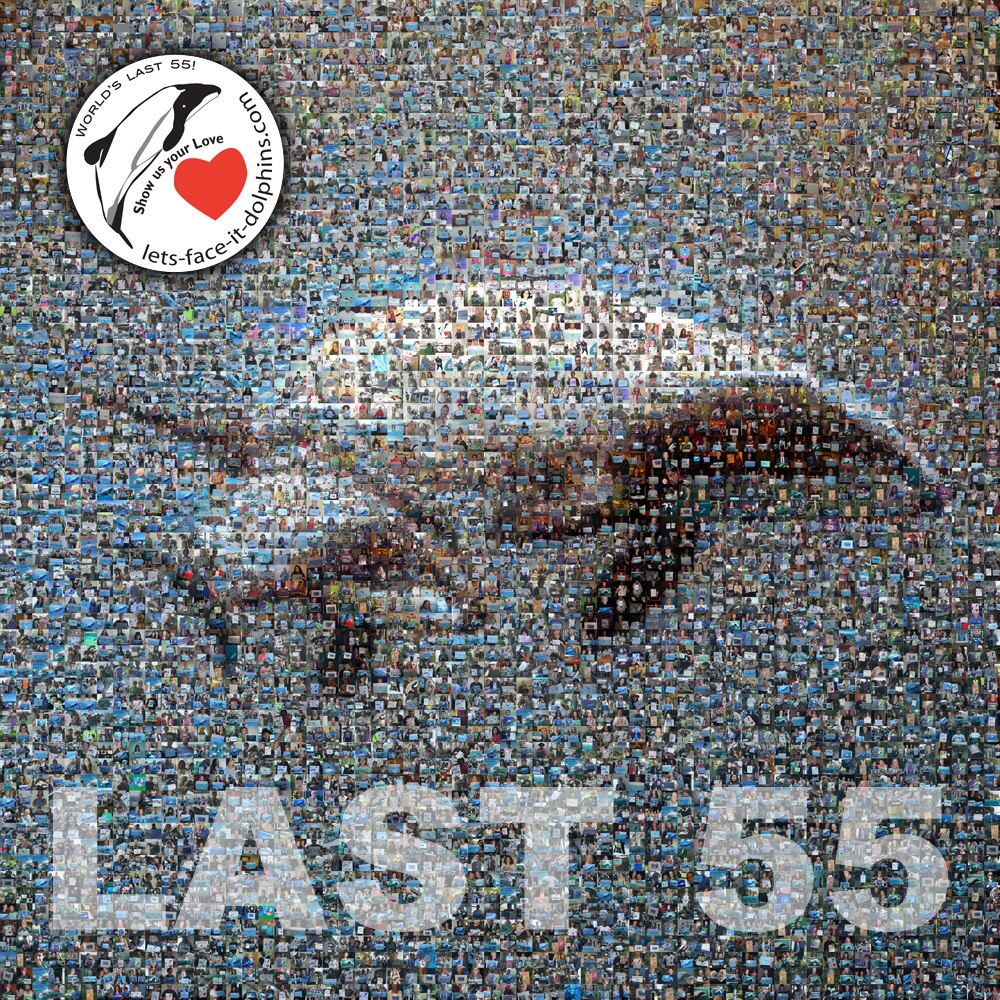Working to Save the World’s Rarest Dolphin
There Are Now Fewer Than 70 Maui's Dolphins Off the Coast of New Zealand

If you’re a person of the ocean, perhaps a surfer of over 37 years like me, you’re bound to have seen a few dolphins sharing waves and leaping clear out of the water, winning over our hearts.
While surfing on more than a dozen visits to New Zealand, I have been waiting to meet a little Maui’s, one of the world’s smallest dolphins. It’s not because they are endemic to New Zealand and named after a Polynesian god by the first peoples of the land; nor is it because they are found only in a very small region off the west coast of the North Island and nowhere else in the world. I’d like like to meet a Maui’s because they are among the rarest animals on the planet, and I’ve been working to save them from extinction.
For eight consecutive years since learning of their dwindling numbers, my association has been working in the community of Raglan, New Zealand, as a volunteer group organizing art action activities at Maui’s Dolphin Day. Environmental groups from across the country gather each year to raise awareness to the plight of the Maui’s, a subspecies of the also critically endangered Hector’s dolphin. The population of the latter has fallen by 75 percent in recent years, with only about 7,200 left. In 2008, there were an estimated 111 Maui’s remaining. Last year, New Zealand’s Department of Conservation updated the number to only 55 adults over the age of one year, with a possible 20 breeding females, and maximum possibility of 69 individuals if counting the juveniles. That represents a drop of 40 percent in five years.

The main threat to these dolphins are gillnets and set nets. While banned in many countries, trawling with gillnets is still allowed in New Zealand waters. These fishing methods are illegal in a small portion of the dolphins’ habitats, but they’re poorly monitored. After a summit of the world’s leading cetacean experts in January 2002, 25 scientists from six continents reached consensus that the single biggest threat facing cetaceans worldwide is death as bycatch in fishing gear. More whales, dolphins, and porpoises die every year by getting entangled in fishing gear than from any other cause. Researchers at Duke University and the University of St. Andrews in Scotland estimate a global annual average of nearly 308,000 deaths per year, or nearly 1,000 per day.
A transition to alternative fishing methods that do not pose such a threat to dolphins could be made with relative ease. So why aren’t these shifts being made, and why hasn’t the N.Z. government taken enough protective measures? While most people’s perception of New Zealand is that of a very “green,” environmentally conscious nation, the truth is the country’s current government has often favored the fishing industries throughout their waters, which reach as far as the Ross Sea in Antarctica. A recent Yale University study, which dropped New Zealand down to 14th in world as an environmentally rated nation, might give the government some food for thought.
In the past year alone, marine scientists and member nations of the IWC (International Whaling Commission) Scientific Committee, IUCN (International Union of Conservation Nations), over 50 animal welfare NGOs, and, most recently, the Society for Marine Mammalogy (SMM) have all expressed concern through letters calling upon the N.Z. government for urgent measures to prevent extinction of the Maui’s.

For Maui’s Dolphin Day 2012, I began coordinating Let’s Face It Visual Petitions, a different sort of campaign. Rather than online petitions, “Let’s Face It” encourages citizens worldwide to collect photographs of people with an image of a Maui’s or Hector’s dolphin, with the intention of presenting these visual petitions (VPs) to the N.Z. government. By April 2012, 1,000 VPs were printed in sets of three large banners for public display, and posters of the same size were hand-delivered to the three key decision makers regarding the Maui’s and Hector’s Dolphins Threat Management Plan (TMP).
On home turf in Santa Barbara, the little dolphins found a place in the heart of artist and filmmaker Dove Joans. Upon learning nearly a year ago about the plight of the Maui’s and Hector’s dolphins, Dove took flight by coordinating “Dolphin Photo Booths” at events including music festivals in Australia, and more recently at our own Samy’s Camera. To date, Dove is the top Visual Petition Collector (VPC) contributing over 1,800 VPs.
I’ve been making the rounds, too, setting up photo stations at benefit events for the Gaviota Coast Conservancy and the Santa Barbara Marine Mammal Center. I can be seen at parties, Farmers Markets, and, more recently, collecting VPs at a Patagonia Store film screening in Ventura. Check out our Celebrity & Legends Corner to see who I’ve been bumping into when out and about with my camera and image of a Maui’s dolphin.
Thanks to people across the world who have been collecting Visual Petitions, our “Let’s Face It” VP wall now features more than 6,100 citizens across many countries. I hope readers will be compelled to visit our website, download an image or two of these special little dolphins, and collect as many “Let’s Face It” Visual Petitions as possible. It’s a fun and easy way to be a powerful voice for these critically endangered species.
Announcement of the Maui’s Dolphin TMP is expected within weeks. Join us in keeping the pressure up as I continue to send follow-up emails including the link to our wall, telling the N.Z. government that the world is watching.



